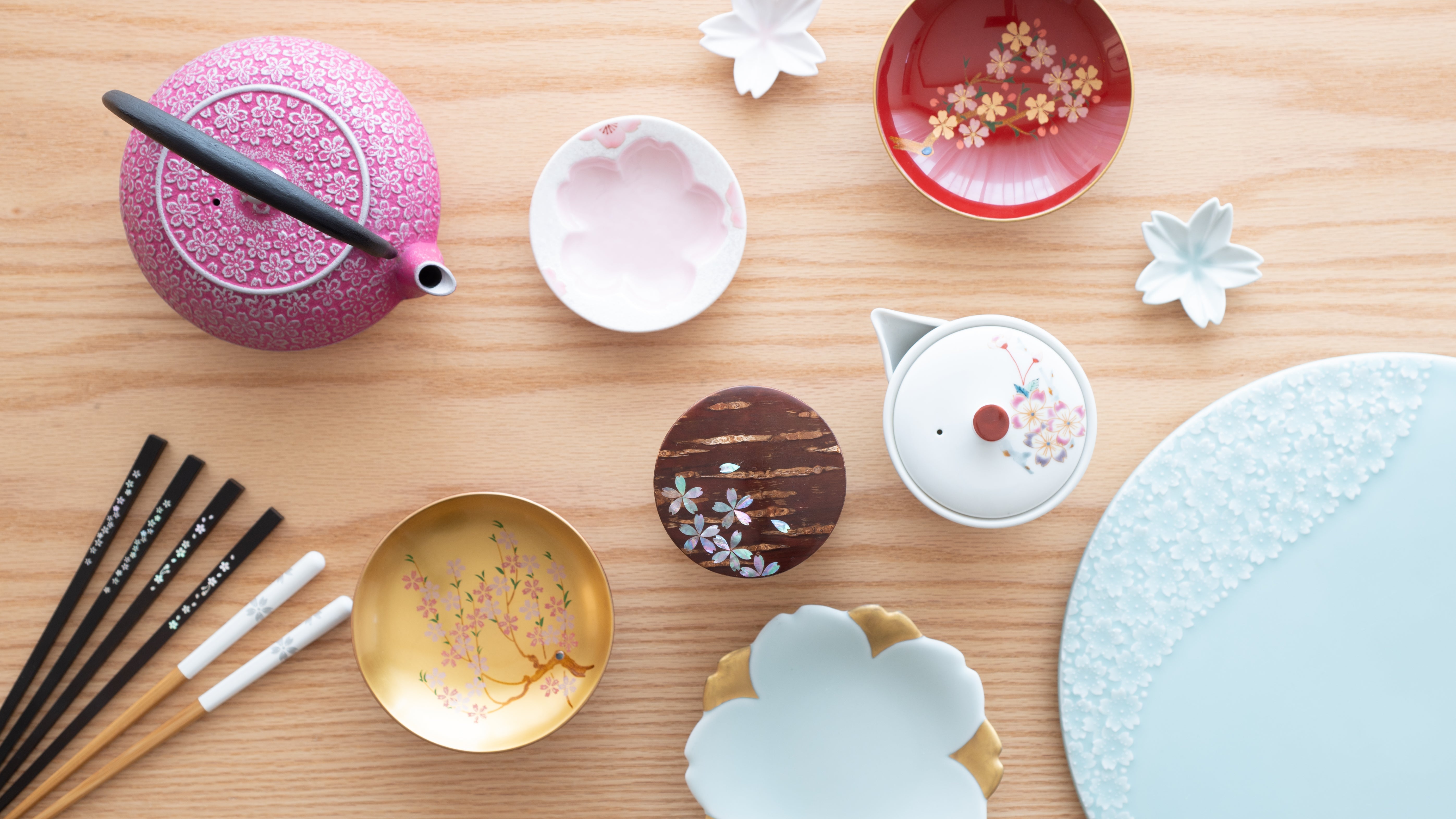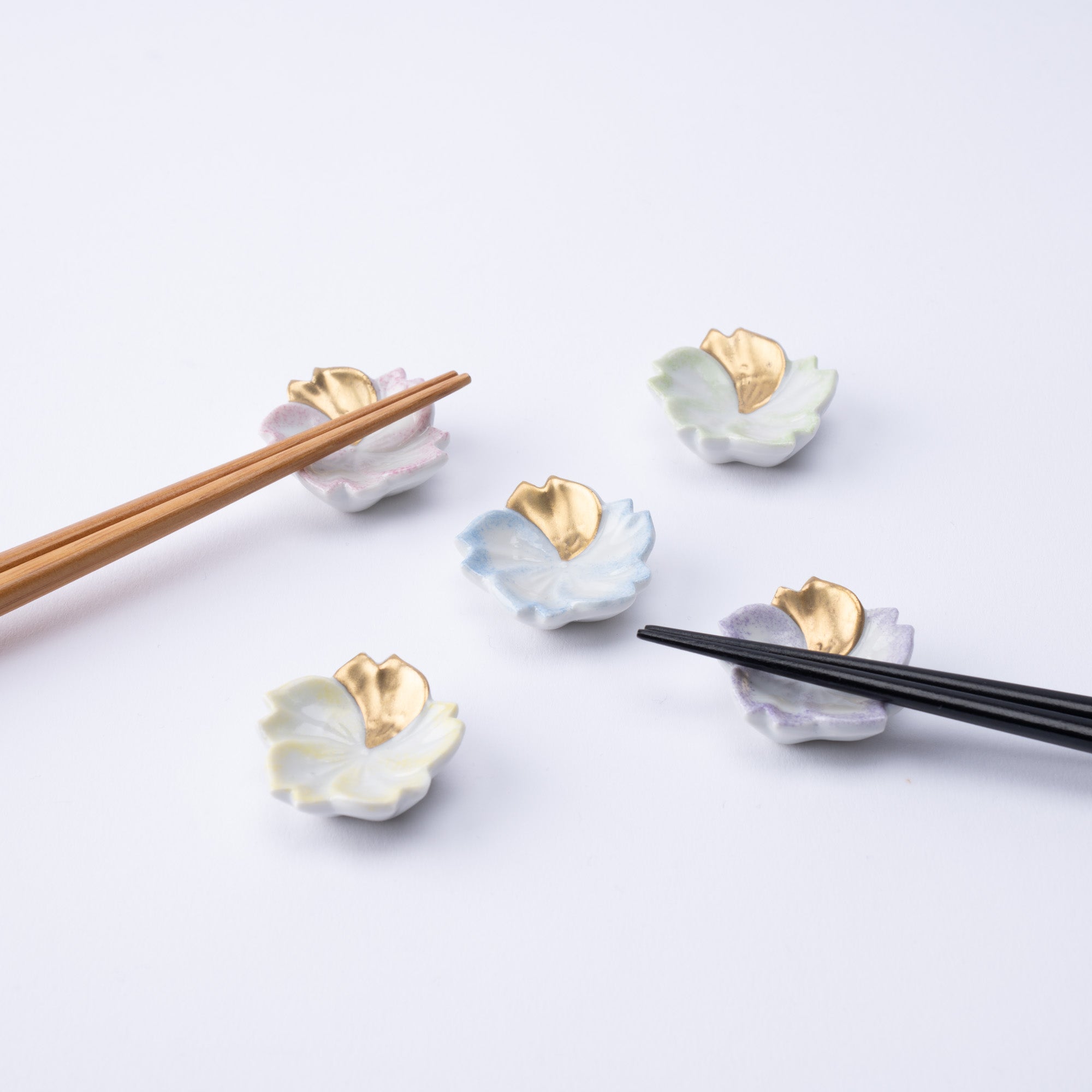
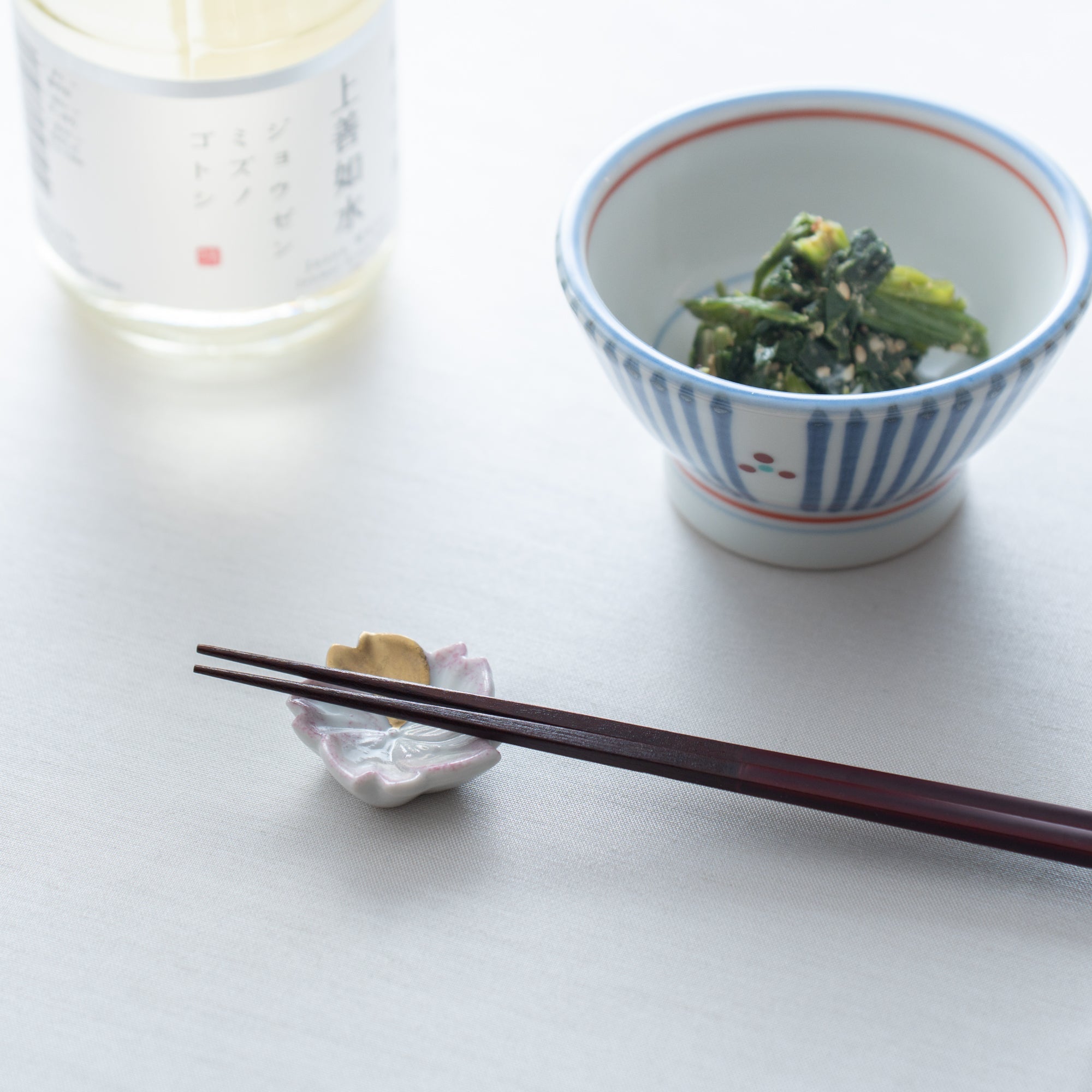
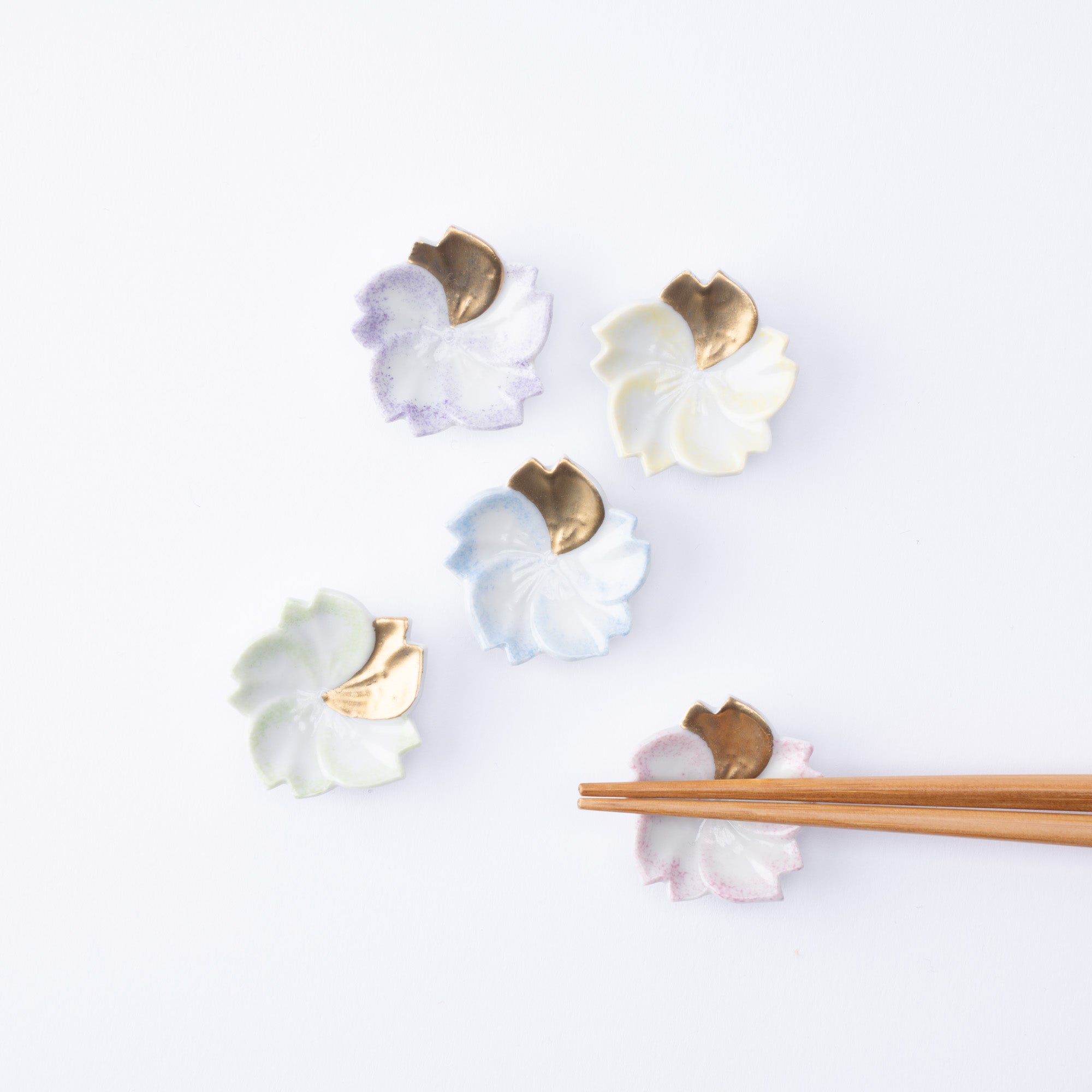
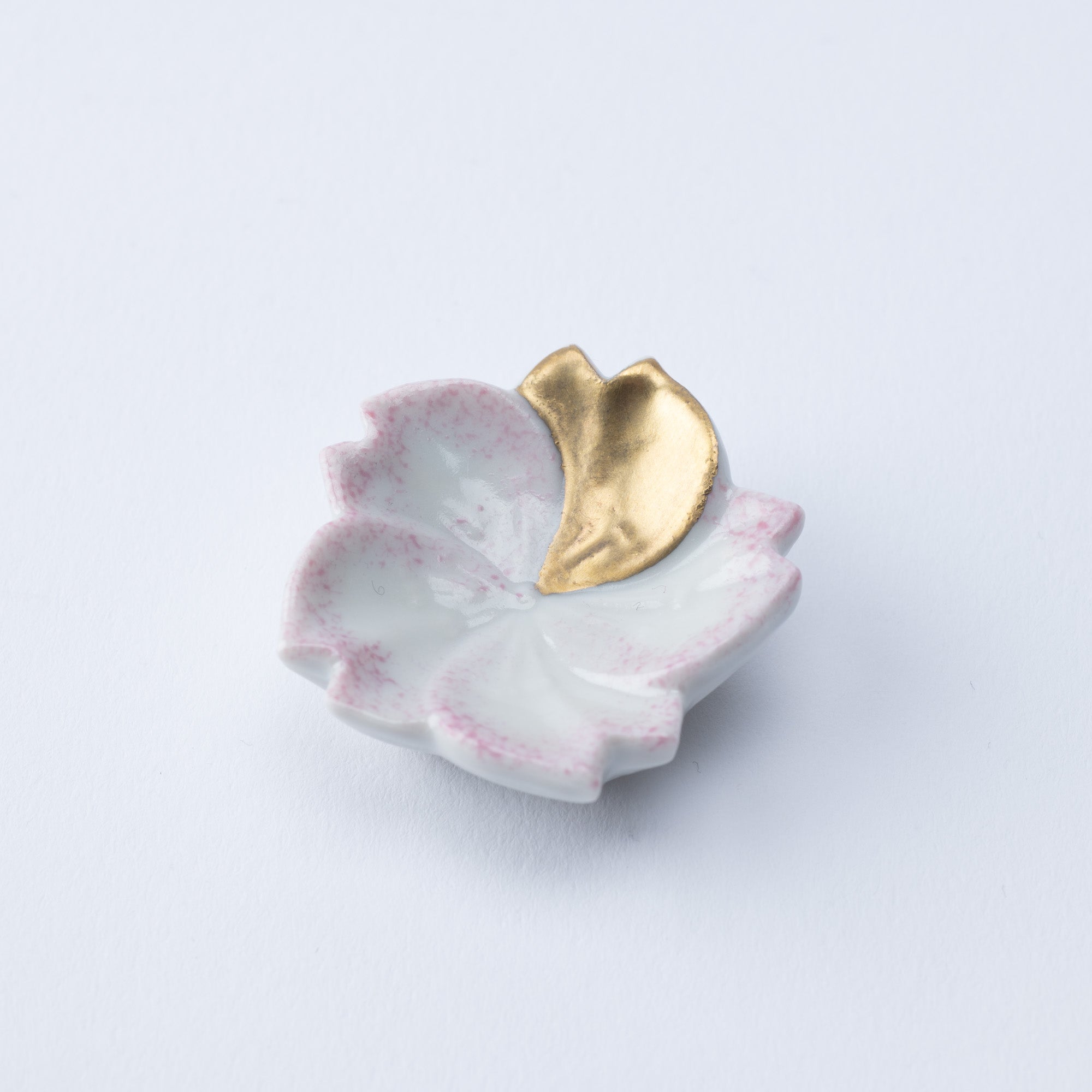
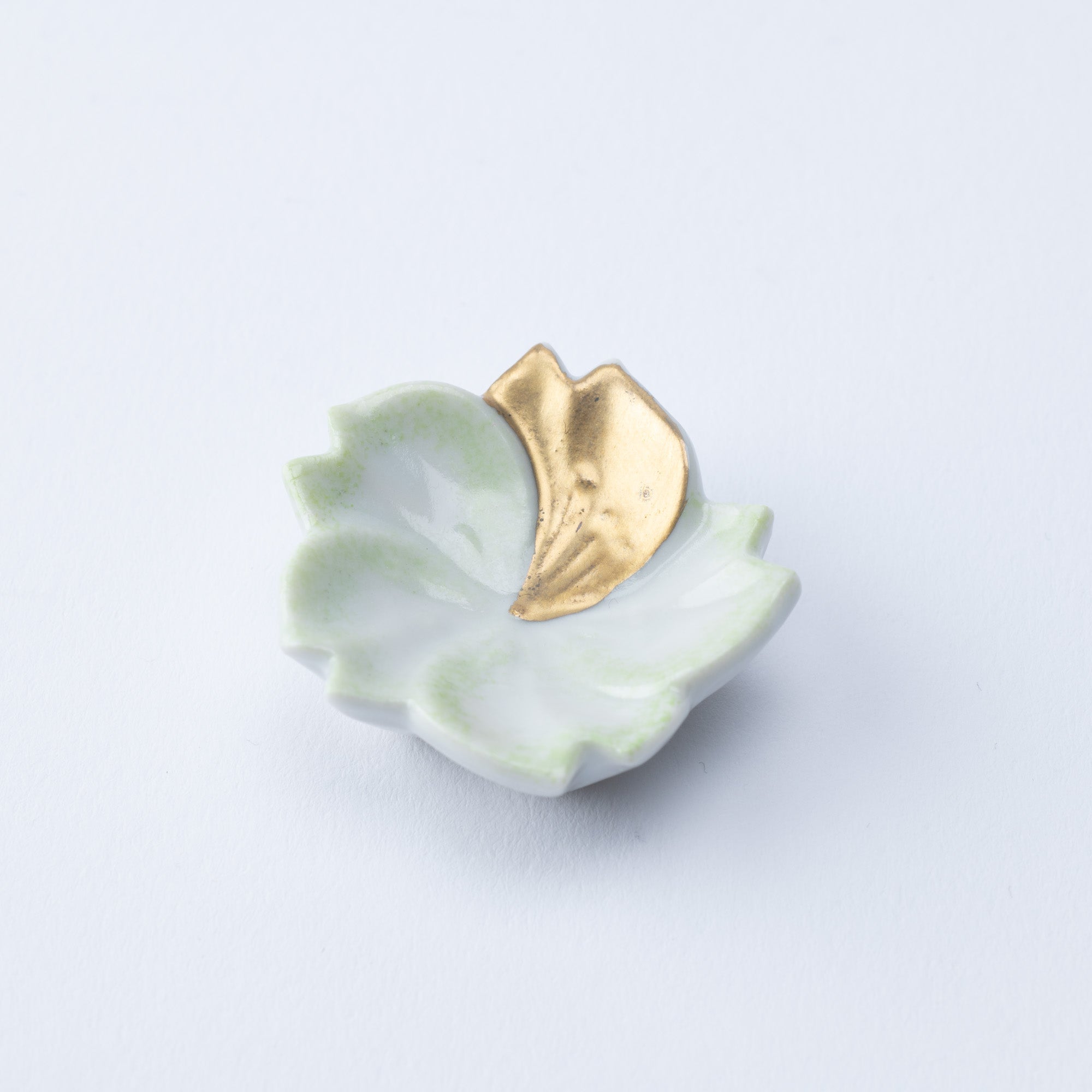
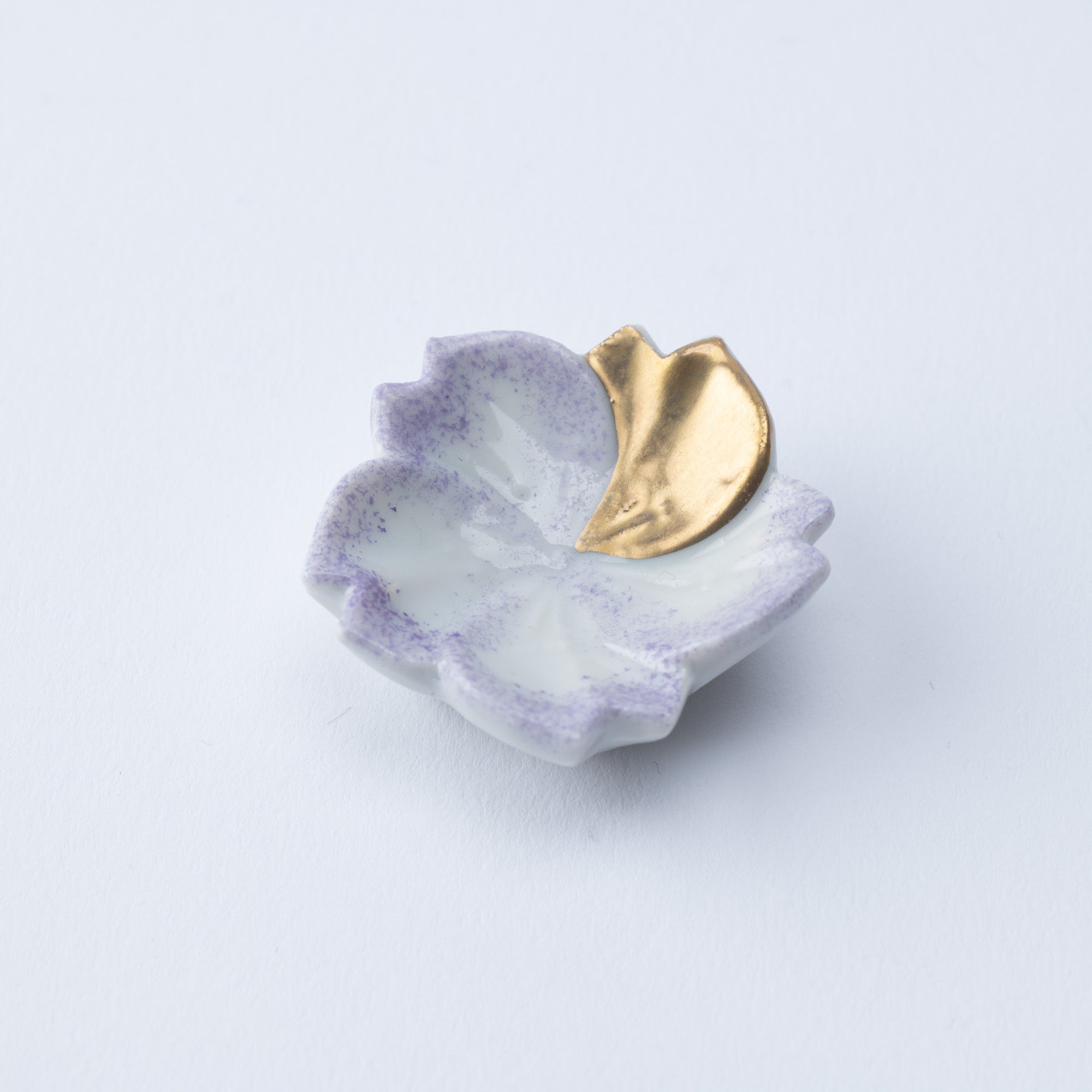
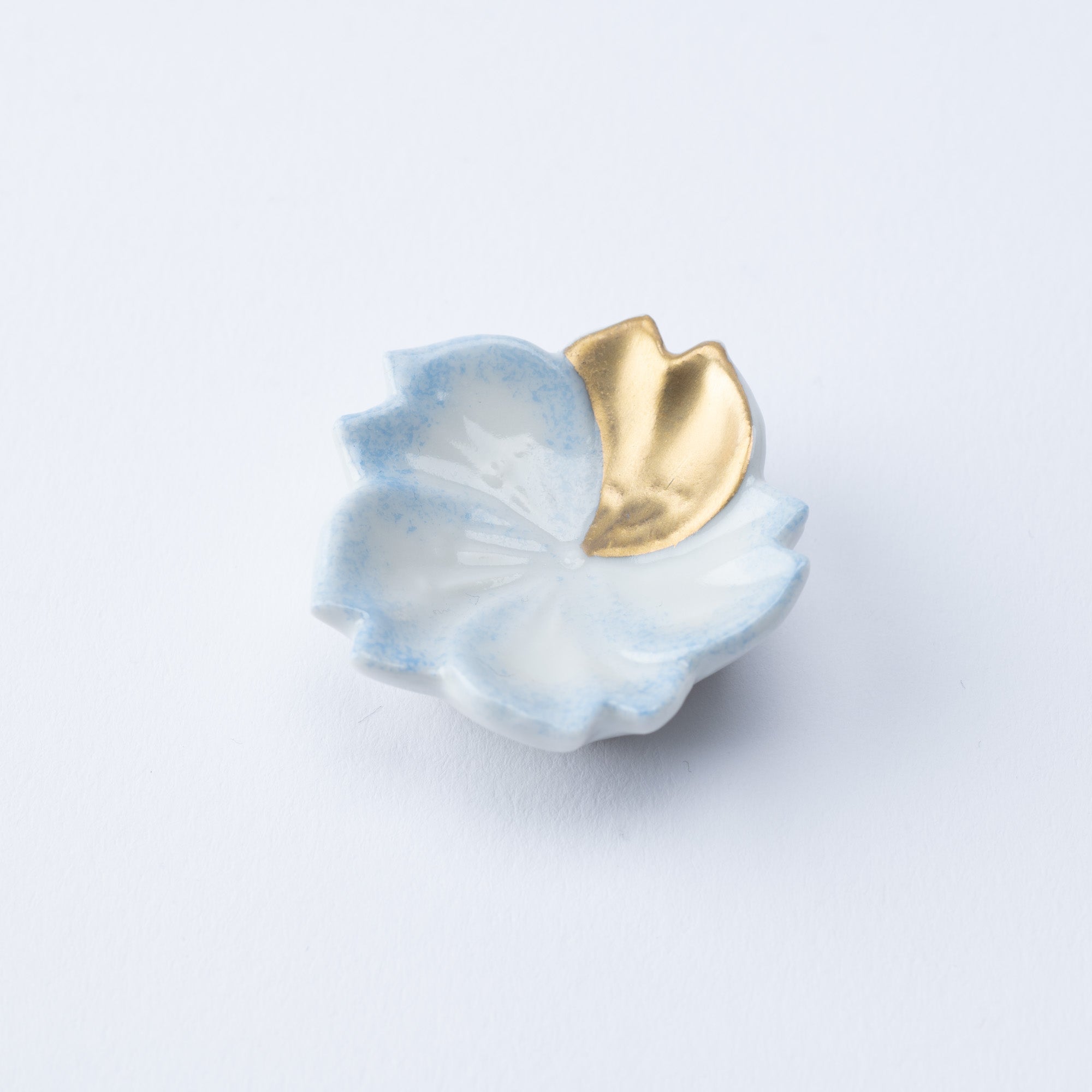
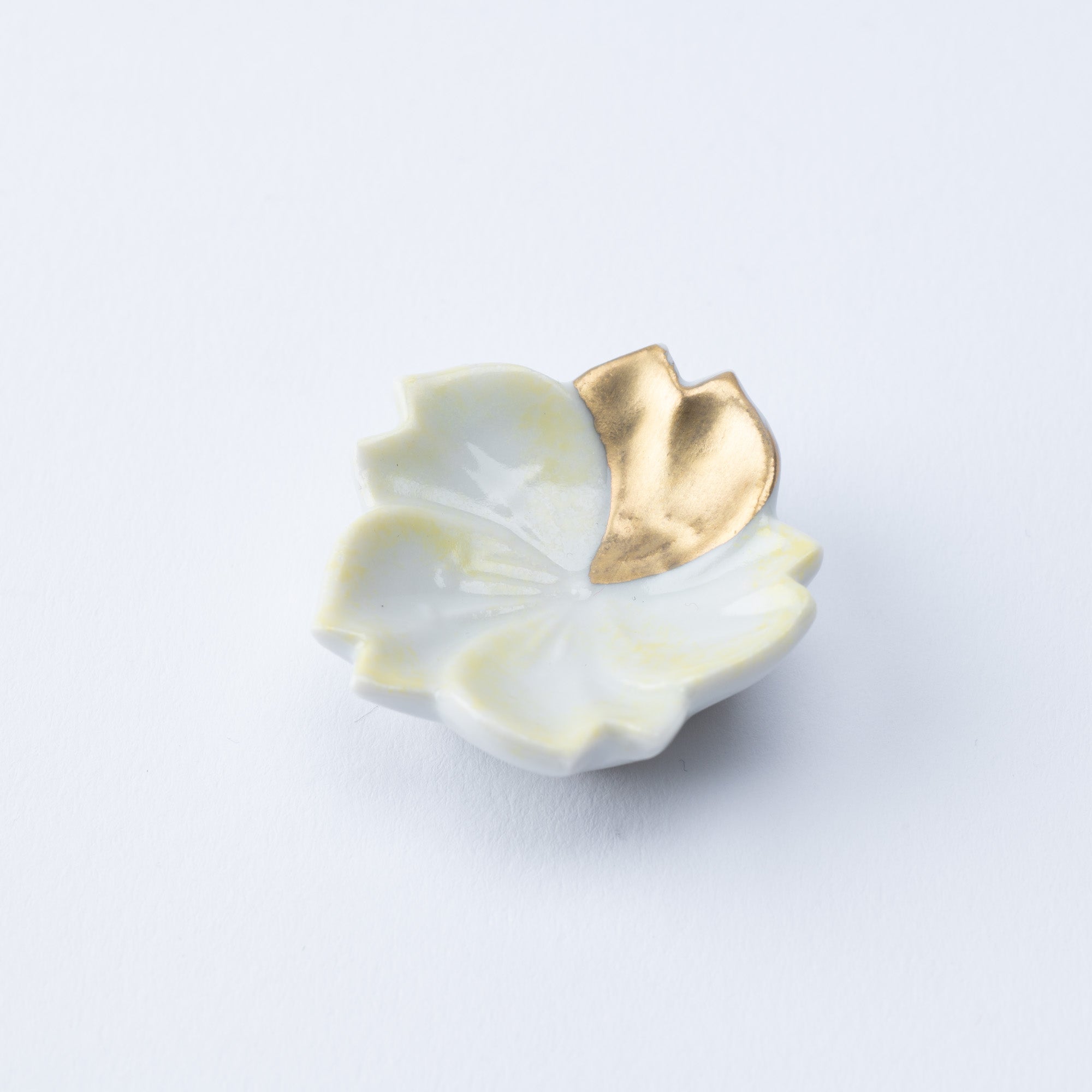
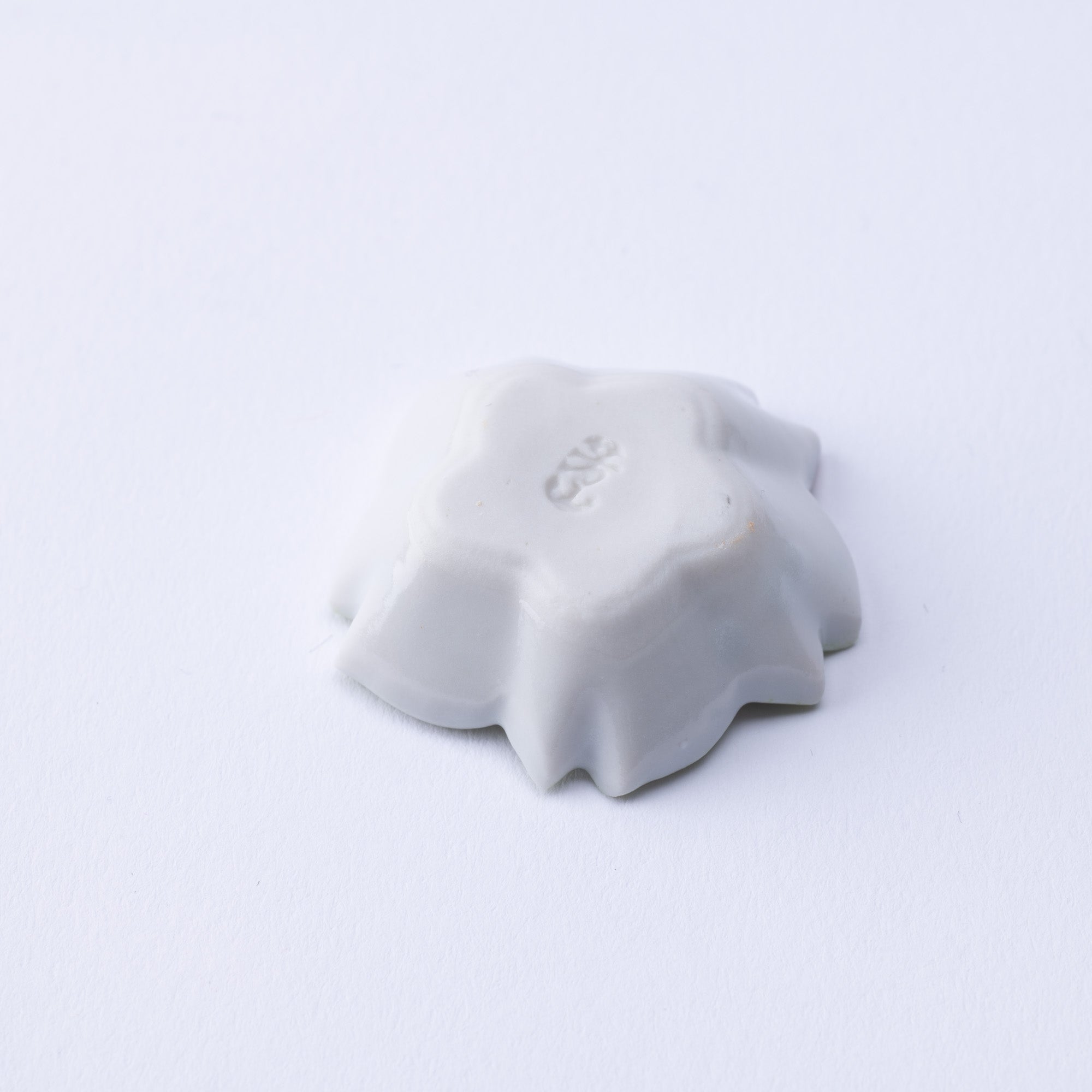
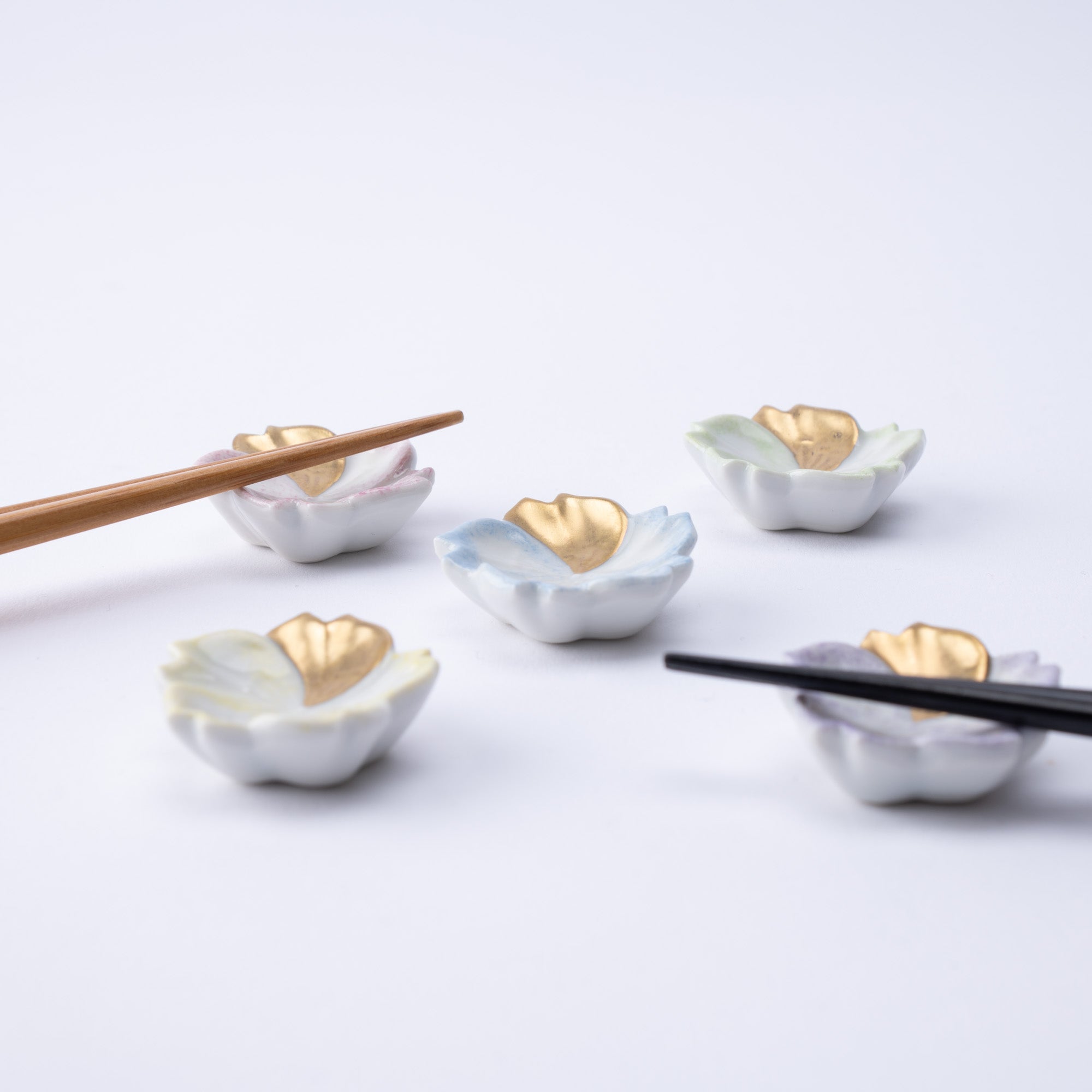
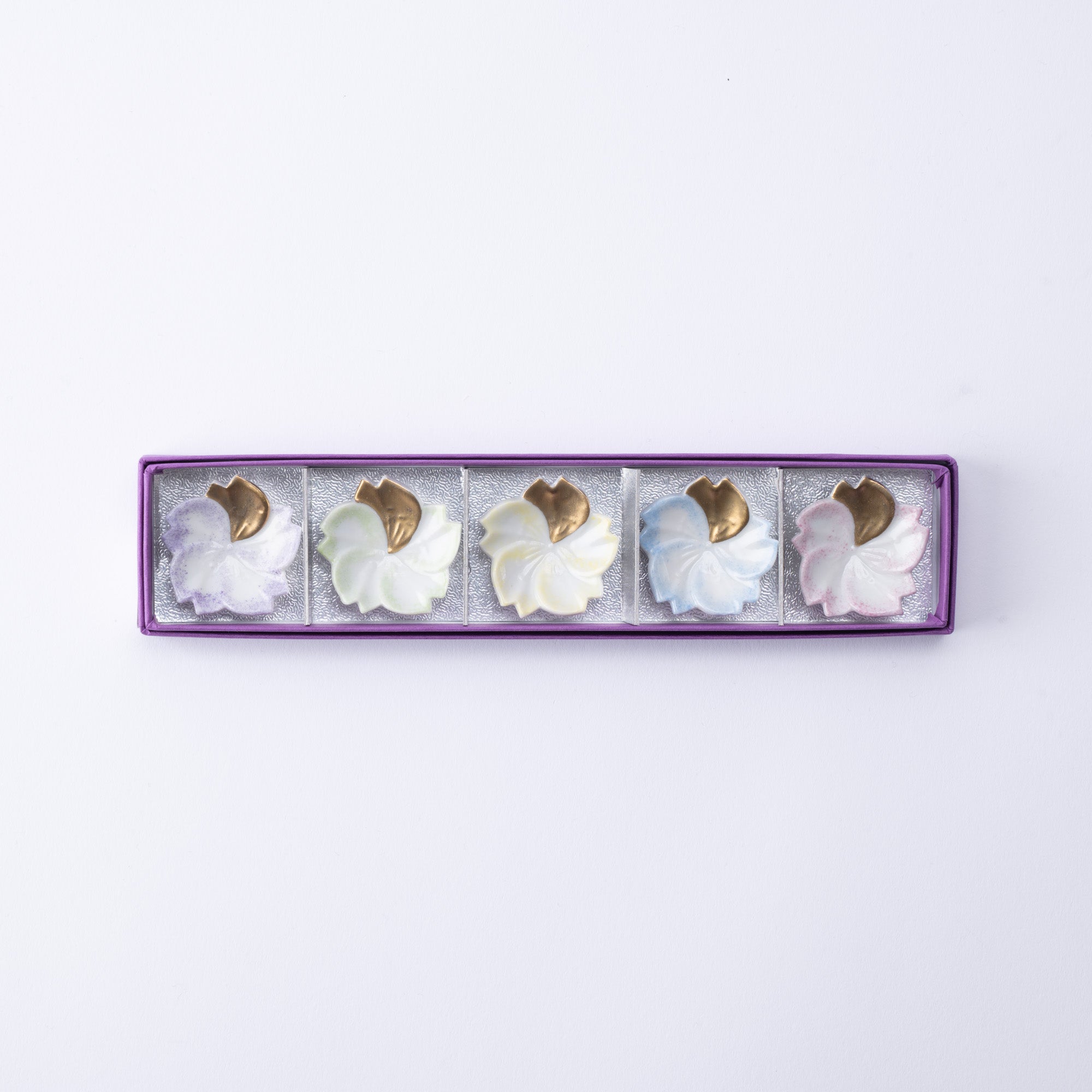
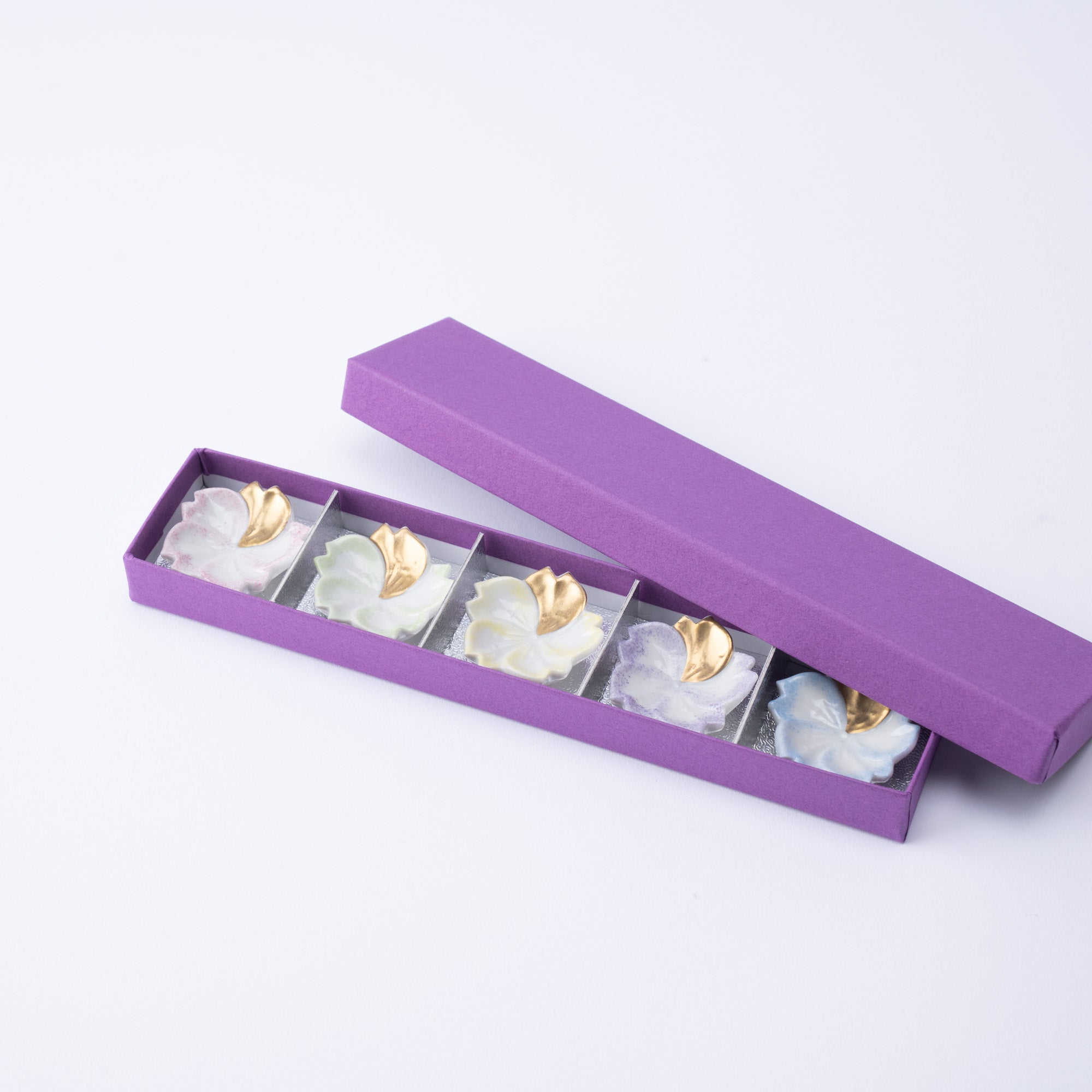
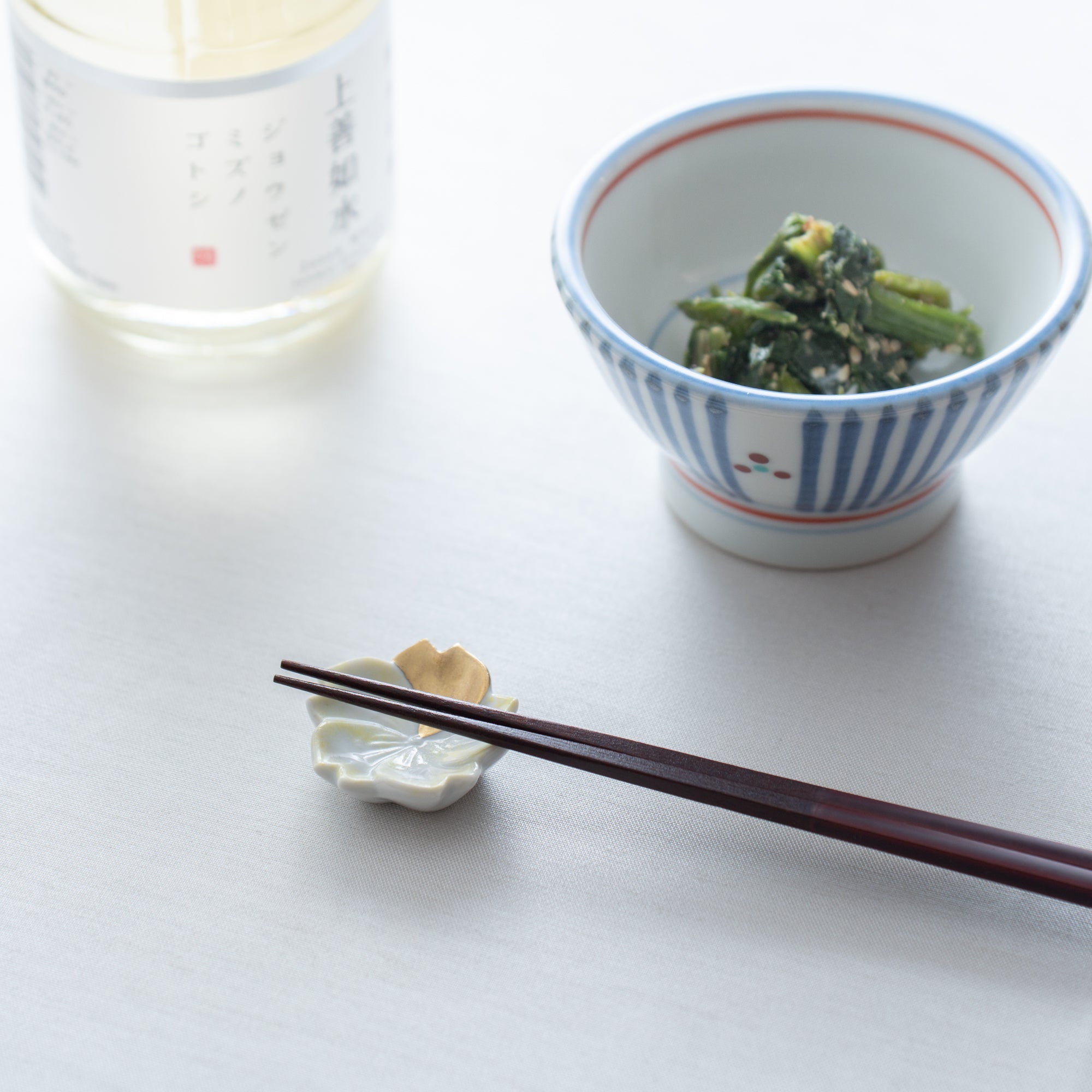
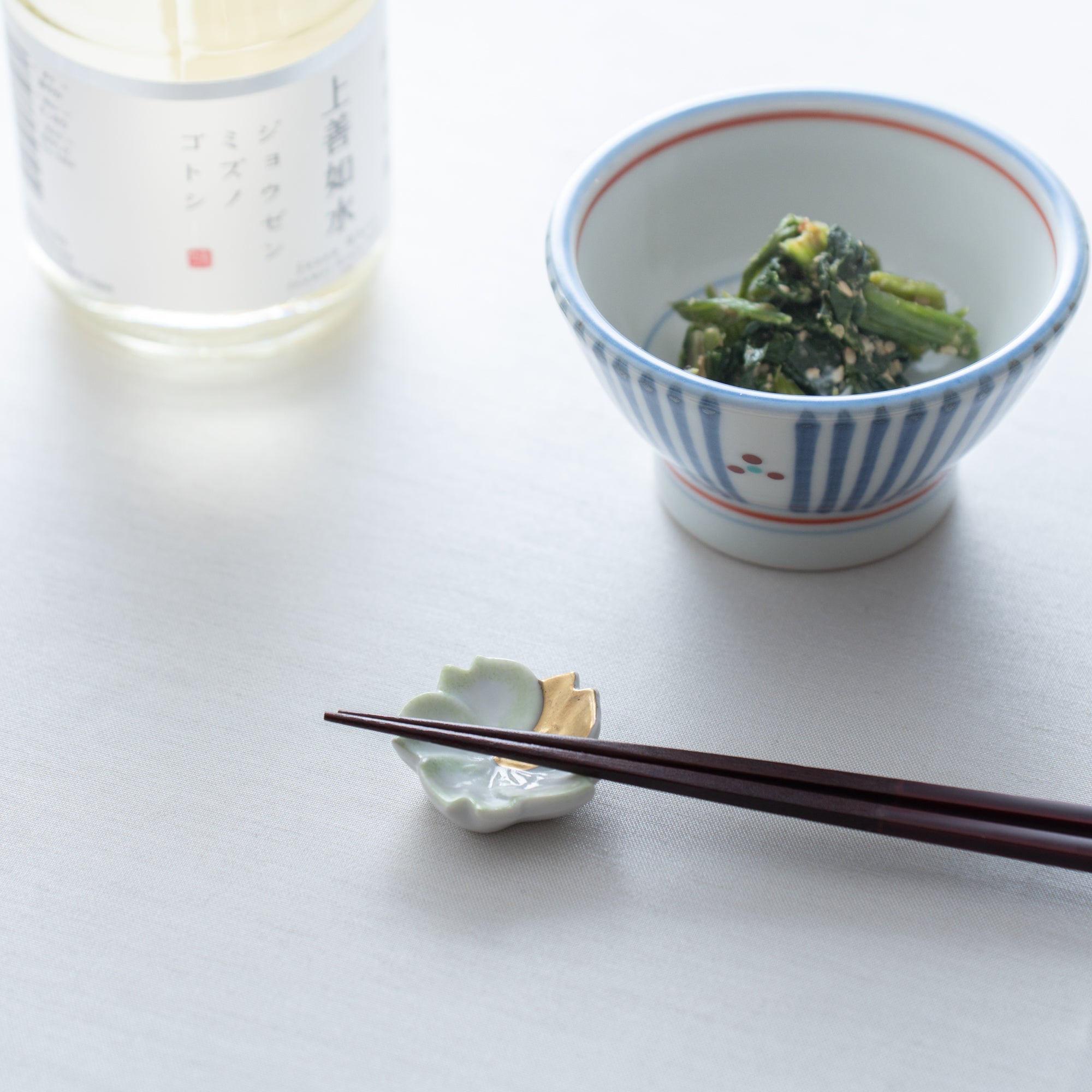
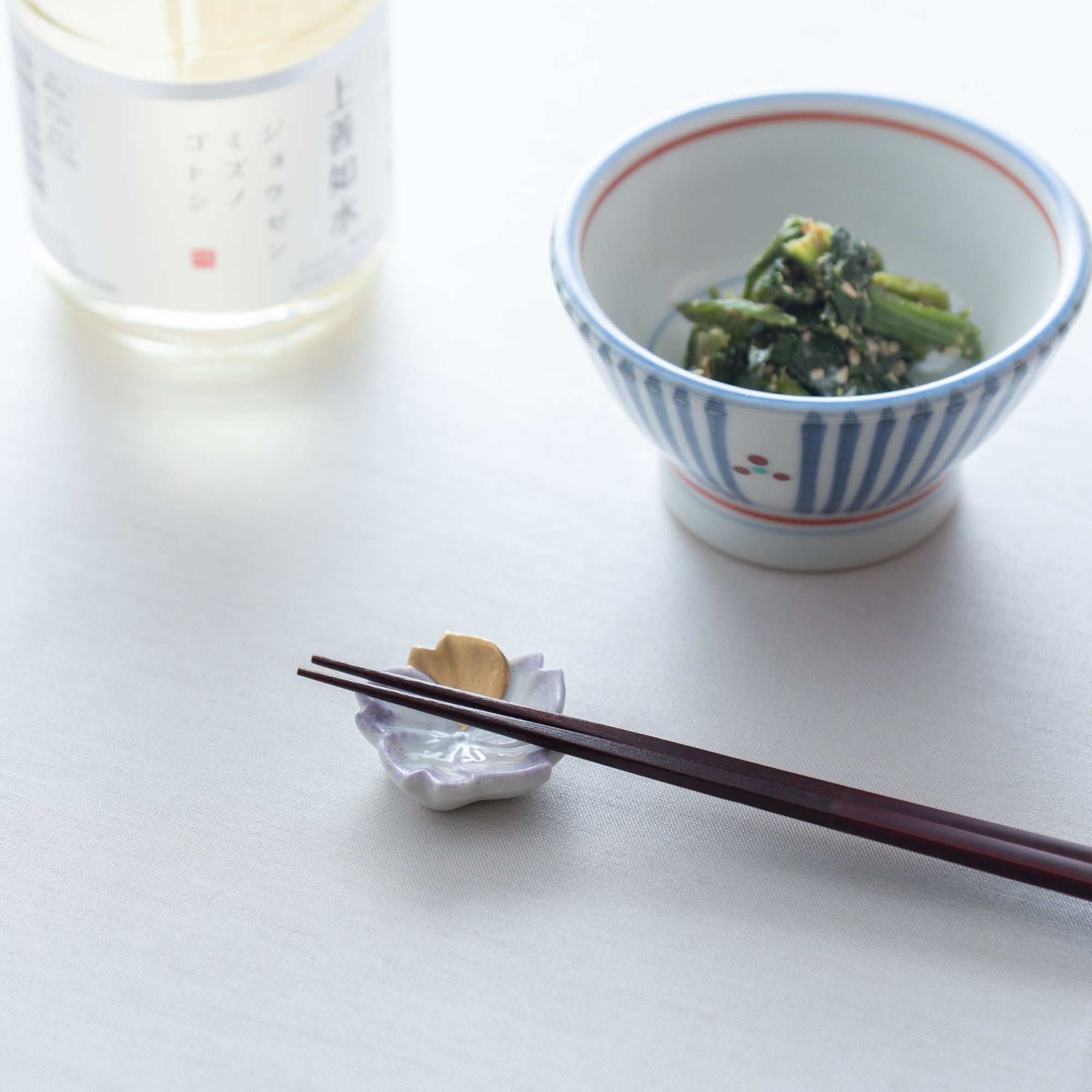
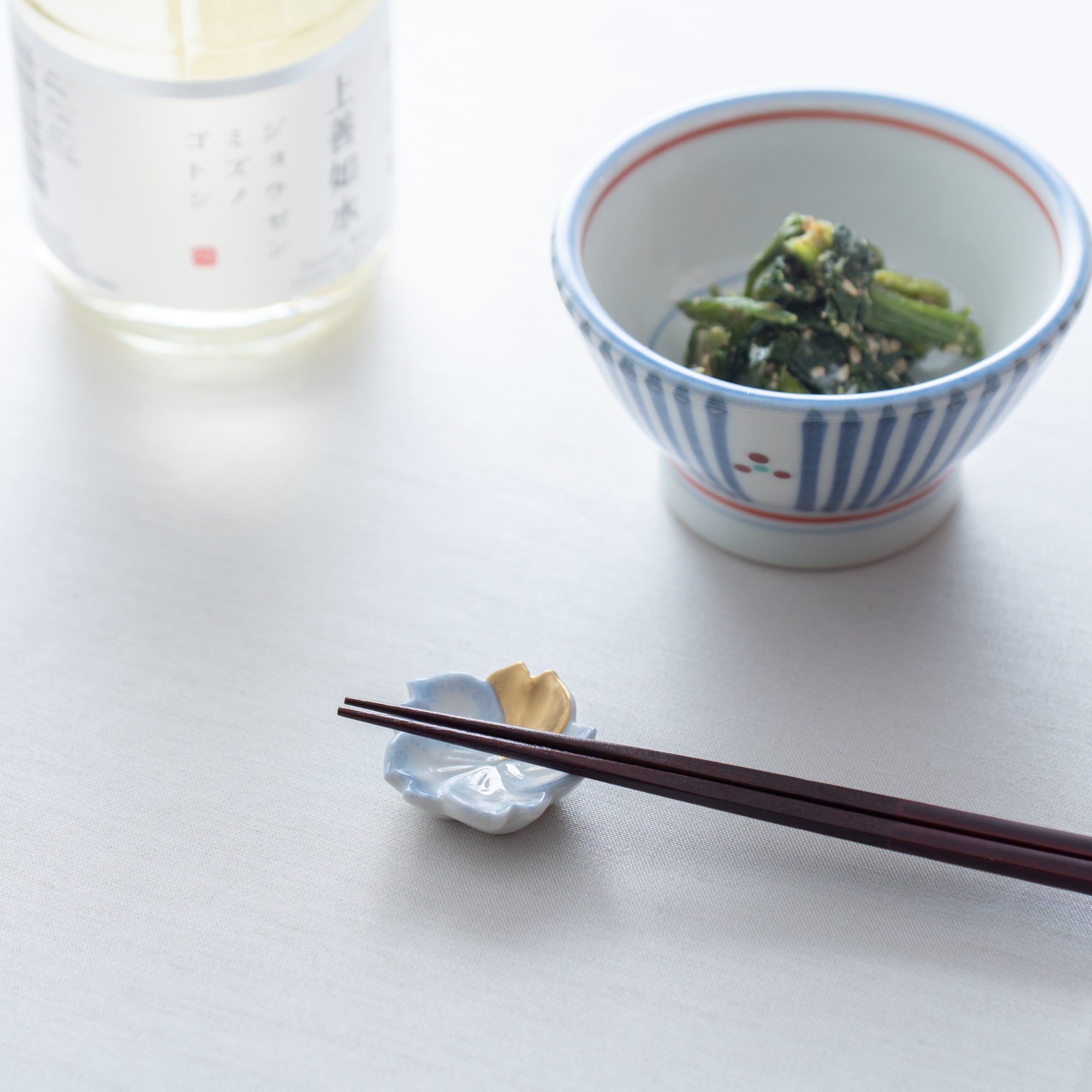
Fünf Farben Sakura Essstäbchenablage Satz
Estimated Shipping Widget will be displayed here!
Diese Ablagen sind mit einem bezaubernden Sakura-Design verziert und in fünf herrlichen Farben erhältlich. Einladende Blau-, Gelb-, Lila-, Rosa- und Grüntöne betonen die liebevoll von Hand bemalten Blütenblätter, und eine davon ist sogar mit einem herrlichen Goldstrich versehen. Diese wunderschönen Stücke verschönern nicht nur jeden Esstisch, sondern beruhigen auch die Emotionen der Betrachter.
Mit ihrer glatten Oberfläche sind Essstäbchenhalter aus Keramik das ideale Material für den täglichen Gebrauch. Sie sind nicht nur leicht sauber zu halten, sondern passen auch zu einer Vielzahl von Geschirrteilen. Darüber hinaus passt es zu einer großen Auswahl an Geschirr und ist in zahlreichen Designs erhältlich, sodass es sich perfekt dazu eignet, Ihre Tischdekoration aufzupeppen.
Diese Essstäbchenablagen sind als 5er-Set erhältlich und eignen sich auch wunderbar als Geschenk.
EINZELHEITEN
| Quantity | 5 pcs |
| Size | D 3.8 cm (1.5 in) x H 1.3 cm (0.5 in) |
| Material | Stoneware |
| Package Type | Paper box |
| Microwave | No |
| Dishwasher | No |
Hersteller / Marke
Der Hozan-Ofen in Kyoto konzentriert sich hauptsächlich auf Unterglasur-Emaillierungstechniken, insbesondere gosu, und ist spezialisiert auf die Herstellung von netzbemaltem Geschirr und zart bemalten Essstäbchenablagen, die mit saisonalen Motiven verziert sind.
Die Geschichte von Hozan Kiln reicht bis ins Jahr 1951 zurück, als das Unternehmen als Kato Yukichi Seisakusho (Kato Yukichi Fabrik) gegründet wurde. Später wurde der Name in Hozan Kiln geändert. Der derzeitige Eigentümer, Kato Yoshitsugu, vertritt die dritte Generation.
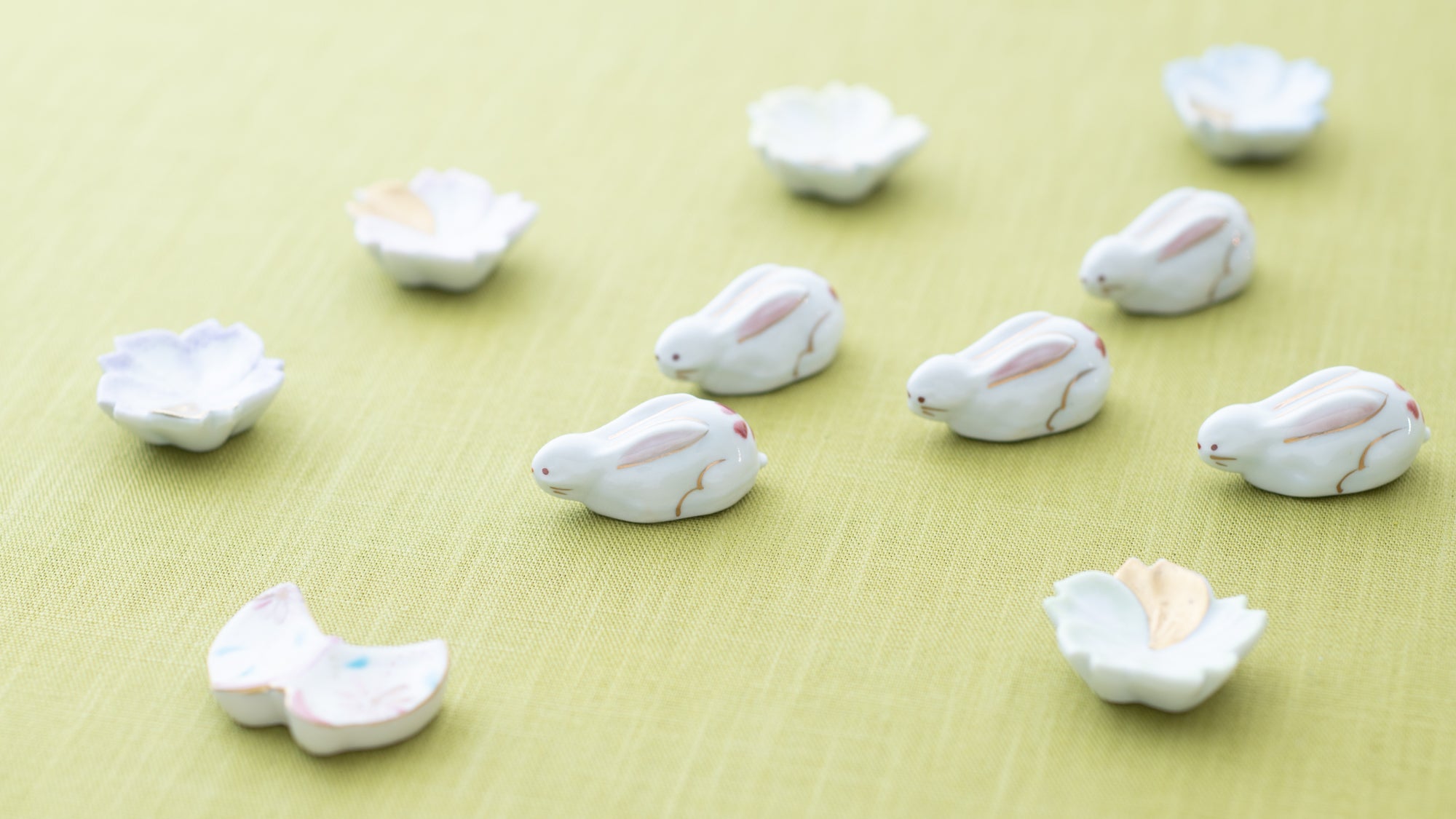
Kunsthandwerk
Kyo- und Kiyomizu-Ware, zusammen als Kyo-yaki und Kiyomizu-yaki bekannt, sind berühmte Keramikstile aus Kyoto. Bekannt für ihr lebendiges Design, ihre fein geformten Formen und die Liebe zum handwerklichen Detail, spiegeln diese Waren Kyotos unverwechselbaren Sinn für Schönheit und künstlerische Raffinesse wider.
Kyo- und Kiyomizu-Ware zeichnen sich durch eine lange gepflegte Vielfalt aus und greifen auf Techniken und Stile der Töpfertraditionen Japans zurück. So entwickelte sich eine ausdrucksstarke und typisch Kyoto-Kunstform. 1977 als traditionelles japanisches Kunsthandwerk anerkannt, werden sie bis heute wegen ihrer kulturellen Tiefe und Alltagstauglichkeit geschätzt.

Optionen auswählen
















Estimated Shipping Widget will be displayed here!
Essstäbchenablagen
Essstäbchenhalter verleihen Ihrem Tisch einen Hauch japanischen Stils. Eine Mischung aus Alltagsgegenständen und besonderen Anlässen macht Ihren Tisch für jeden Anlass bereit. Wir haben handgefertigte Essstäbchenhalter aus ganz Japan ausgewählt, um Ihr kulinarisches Erlebnis noch angenehmer zu gestalten. Von verspielten Porzellanformen bis hin zu eleganten Metalldesigns verleihen diese kleinen Akzente jedem Ambiente einen besonderen Charme.
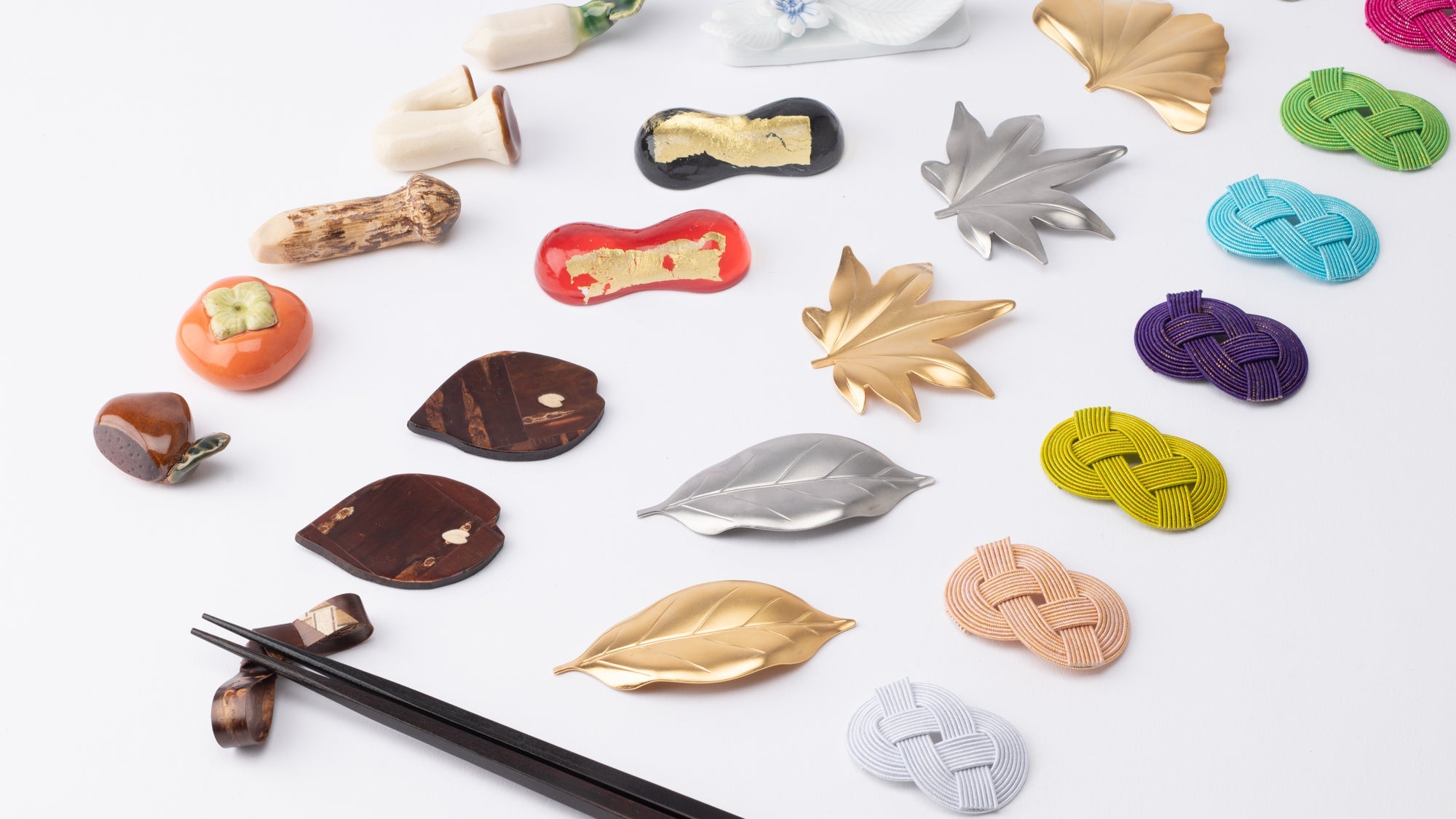
Sakura
Aus unserer Kollektion an japanischem Geschirr und Essgeschirr haben wir Artikel mit Kirschblütenmotiven zusammengestellt, die die Schönheit Japans widerspiegeln. Wir hoffen, dass Sie diese Stücke, die bei Menschen jeden Alters und aus allen Regionen beliebt sind, in Ihrem Zuhause willkommen heißen.
